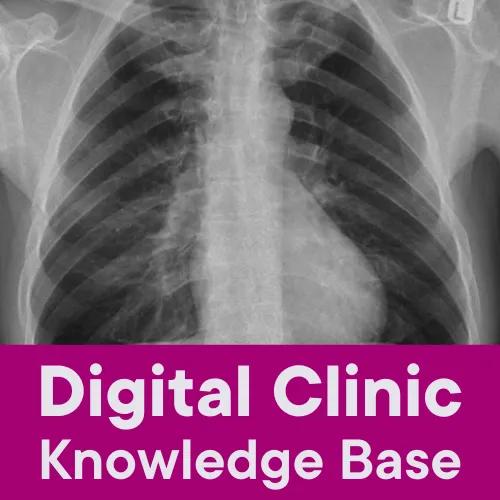
Pulmonary Hypertension Digital Clinic
Welcome to the Digital Clinic - home to pulmonary hypertension best practice case studies and diagnostic tools knowledge base
Designed to enhance clinicians’ awareness of pulmonary hypertension (PH) and its treatment, the Digital Clinic features anonymised real patient data from the USA and Europe. The case studies follow the latest medical guidelines and current therapy recommendations. They illustrate how to recognise signs of PH and determine suitable treatment plans.
Each case study follows up to three stages in the patient's journey: initial consultation at a general clinic, referral to a specialist PH centre, and the treatment phase. The case studies are not designed to support the treatment pathway of any one individual patient.
Case studies

Miss Smith is a 21-year-old lady, who has become progressively breathless over 2 years. Her general practitioner has been treating her for asthma with increasing inhaled therapy, but she is not improving.
The symptoms of pulmonary hypertension arise primarily from right ventricular dysfunction and right ventricular failure. The commonest symptom is shortness of breath on exertion. Other symptoms include fatigue, exertional dizziness, collapse or chest pain, palpitations and ankle swelling. Cough is often a feature suggesting significant pulmonary arterial or right atrial enlargement. The mechanism is believed to be compression of a bronchus by the enlarging vessel/atrium.

Mrs Colins is a 23-year-old woman who is 18 weeks into her first pregnancy and has been referred to a cardiologist after presenting to the ER following an episode of collapse with loss of consciousness.
Examination is a key part of the initial assessment. It also aids assessment of disease severity and can give clues to the aetiology. It should be appreciated that clinical signs of pulmonary hypertension can be very subtle and are normally best appreciated once the diagnosis is known. In idiopathic pulmonary arterial hypertension, resting hypoxaemia is very rare in the absence of severe disease. In pre-capillary pulmonary hypertension hypoxaemia usually suggests a problem with gas exchange e.g. due to coexisting lung disease or in systemic sclerosis where gas transfer is often impaired even in the absence of interstitial lung disease) or hypoventilation in patients with obesity hypoventilation syndrome. It may also be seen in patients with right to left shunts. In patients with a patent ductus arteriosus, oxygen saturation may be well maintained in the hands (and no clubbing) but there may be significantly lower saturations in the feet (which may be clubbed) due to the site of the right to left shunt.

Mr Brown is a 63-year-old man who regularly attends a rheumatology clinic with systemic sclerosis. He has just had his annual screening echo for pulmonary hypertension.
The symptoms of pulmonary hypertension arise primarily from right ventricular dysfunction and right ventricular failure. The commonest symptom is shortness of breath on exertion. Other symptoms include fatigue, exertional dizziness, collapse or chest pain, palpitations and ankle swelling.
